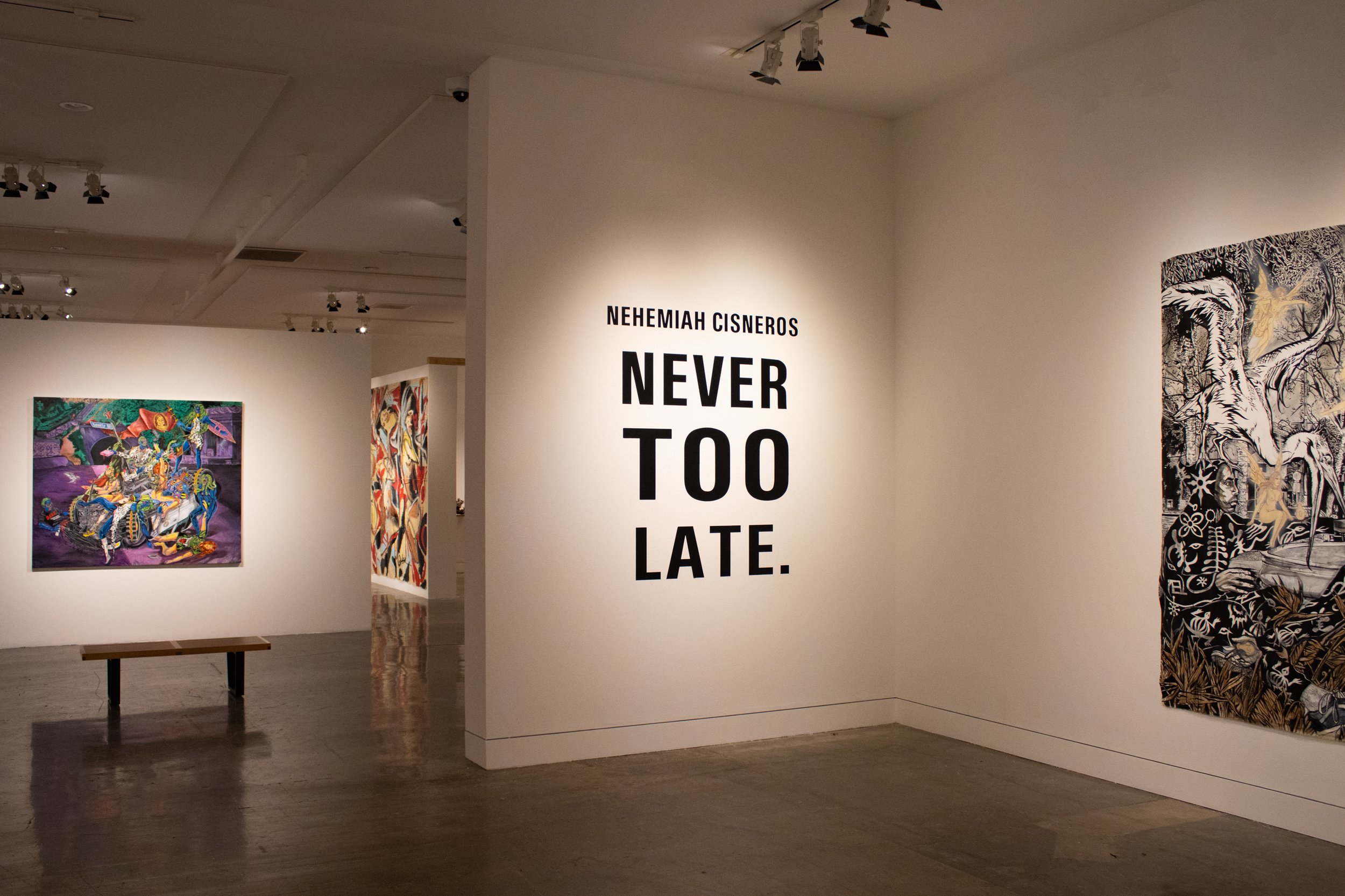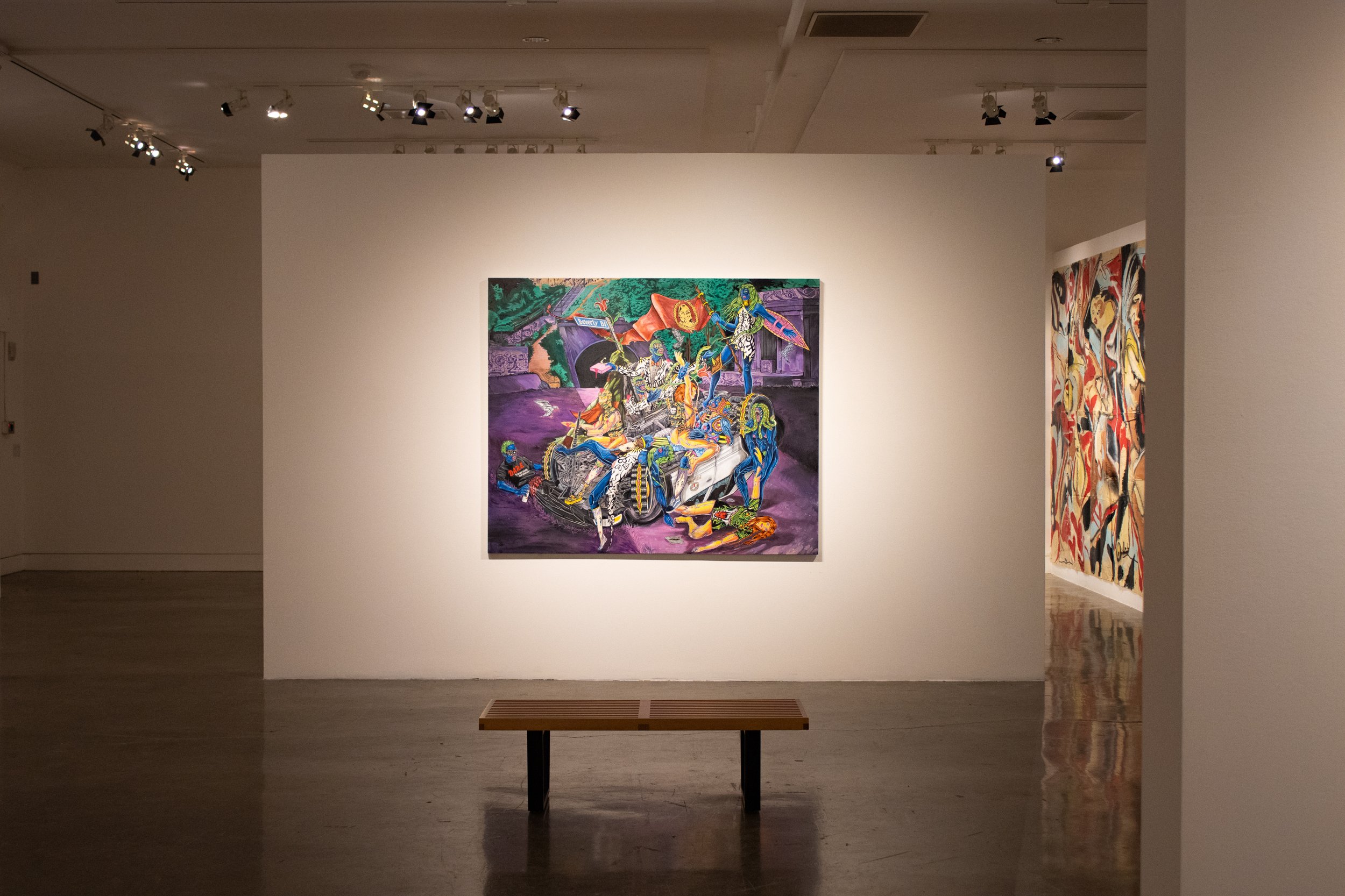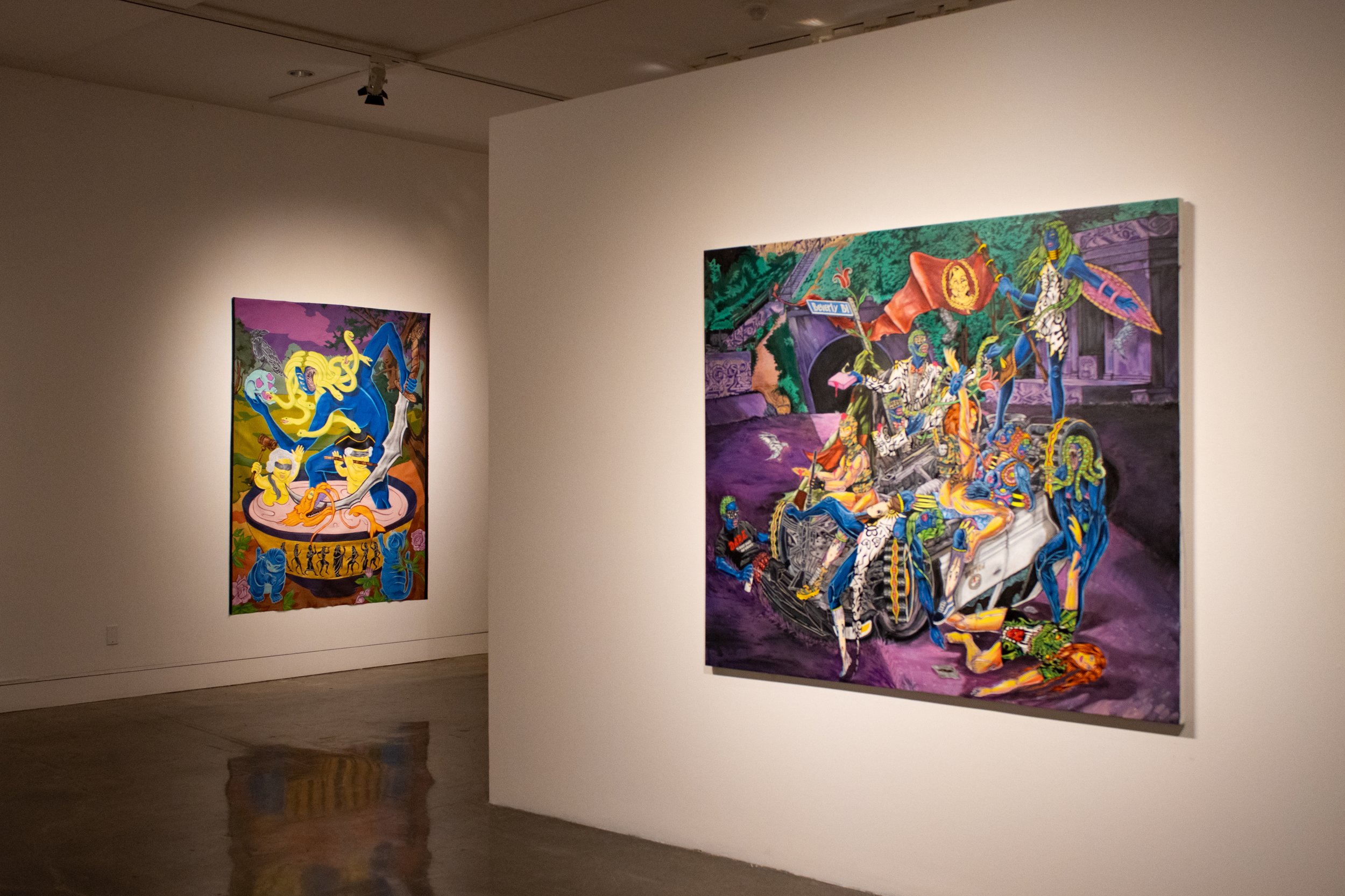A View of “Ride of The Kali Yuga”



Nehemiah Cisneros, a former Santa Monica College (SMC) alumnus, successfully communicates his desire for change in his painting “Ride of The Kali Yuga,” which is currently on display at the Pete & Susan Barrett Gallery in the SMC Performing Arts Gallery until April 22. The gallery proudly showcases this painting among many other powerful works of his, sharing a similar artistic theme throughout.
The exhibition Never Too Late features some of Cisneros' best work from his time at the University of California Los Angeles (UCLA). “Another Day In Paradise,” “Summer Of Seneca,” “Southern Comfort,” and “Ride of The Kali Yuga” are among the paintings being displayed.
Nehemiah said, “Ride of The Kali Yuga is one of my favorite pieces. I am thrilled it is in my survey show, Never Too Late, at the Santa Monica College Performing Arts Center's Barrett Art Gallery. I'm honored to return back to SMC. It's a full-circle moment for me.”
“Ride of The Kali Yuga” speaks to society about change, overthrowing oppressors, and empathy for victims, as well as giving insight into objects that are sentimental to the artist. The work depicts an upside-down police car with five figures placed on top, two under, and three standing next to it.
The event is depicted in the Belmont Tunnel in Los Angeles. The tunnel was once one of the most popular subway terminals but is now boarded up and used for graffiti practice. This specific location not only functions as the place where Cisneros would practice art but also symbolizes change.
Wedged underneath the police vehicle are two figures, one blue and one yellow. The crushed, blue man on the left is sporting a Drug Abuse Resistance Education (D.A.R.E.) shirt and is spray-painting the vehicle. “The ‘D.A.R.E: To Resist Drugs and Violence’ shirt is a nod to Reaganomics, which the D.A.R.E program was born out of a period where the crack epidemic was devastating Los Angeles, which I draw parallels to the fentanyl epidemic we are facing today,” Cisneros said.
The woman with a yellow tone is seen on the ground with a piece of shattered glass from the car window driven into her leg. Both the blue and yellow figures are depicted as victims of the authority element in the painting; they are both hurt and their kin, depicted by the same skin and hair color, triumph over the oppressor in retaliation.
Cisneros has painted various other pieces, and the color blue stays consistent with the characters he depicts. “The consistency of adorning my figure's skin with the color blue is my way of canonizing, making the work recognizably joined together in a grand narrative, a universe,” he said. “Blue skin is an archetypal stand-in for blackness; it's a powerful color, endless, like the sky or ocean.”
The presence of the Beverly Blvd. sign is a powerful symbol in the painting that calls attention to the Rodney King riots of 1992 and how it affected the African American community. The corruption within the Los Angeles Police Department is linked to the sign, as well as a portion of a red flag with the image of Christopher Dorner, who was also a corrupted cop.
The underlying but potent message of this painting, as well as other works of his, is uprising. Cisneros took inspiration from the Rodney King and George Floyd riots of 2020 to create this specific piece. Both instances were caused by the cops’ use of extreme force on King and Floyd, ultimately killing Floyd and leaving King with permanent brain damage.
In the case of King, tensions in Southern Los Angeles were already on the rise due to dangerous neighborhoods and unfair treatment from the criminal justice system. Additionally, drug abuse was an apparent burden as the DARE shirt implies. After the initial acquittal of the cops, riots followed where buildings were set aflame, stores were raided, and a city curfew was set.
“It's surreal to walk through this exhibition and see Ride of the Kali Yuga, paired next to works from SMC and KCAI. I'm ecstatic to engage with currently enrolled SMC students about their work and plans for their art practice after they transfer to their desired institutions,” said Cisneros.
Despite only one tipped-over police car, the painting gives us insight into significant past events with an artistic twist. The majority of this artwork has been about rebellion, victims, and teamwork.



